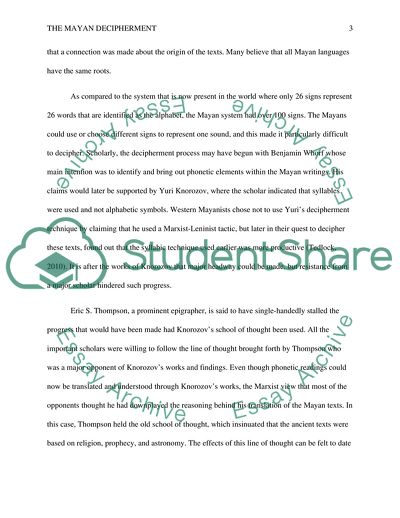Cite this document
(The Mayan Decipherment Essay Example | Topics and Well Written Essays - 1250 words, n.d.)
The Mayan Decipherment Essay Example | Topics and Well Written Essays - 1250 words. https://studentshare.org/archaeology/1869432-what-are-the-scholarly-consequences-of-one-of-the-decipherments
The Mayan Decipherment Essay Example | Topics and Well Written Essays - 1250 words. https://studentshare.org/archaeology/1869432-what-are-the-scholarly-consequences-of-one-of-the-decipherments
(The Mayan Decipherment Essay Example | Topics and Well Written Essays - 1250 Words)
The Mayan Decipherment Essay Example | Topics and Well Written Essays - 1250 Words. https://studentshare.org/archaeology/1869432-what-are-the-scholarly-consequences-of-one-of-the-decipherments.
The Mayan Decipherment Essay Example | Topics and Well Written Essays - 1250 Words. https://studentshare.org/archaeology/1869432-what-are-the-scholarly-consequences-of-one-of-the-decipherments.
“The Mayan Decipherment Essay Example | Topics and Well Written Essays - 1250 Words”. https://studentshare.org/archaeology/1869432-what-are-the-scholarly-consequences-of-one-of-the-decipherments.


